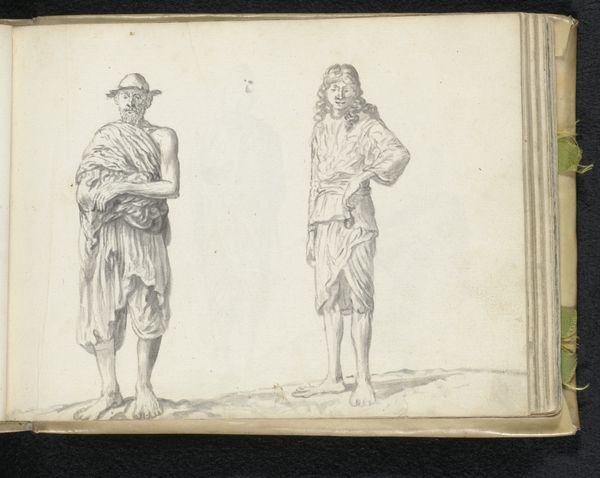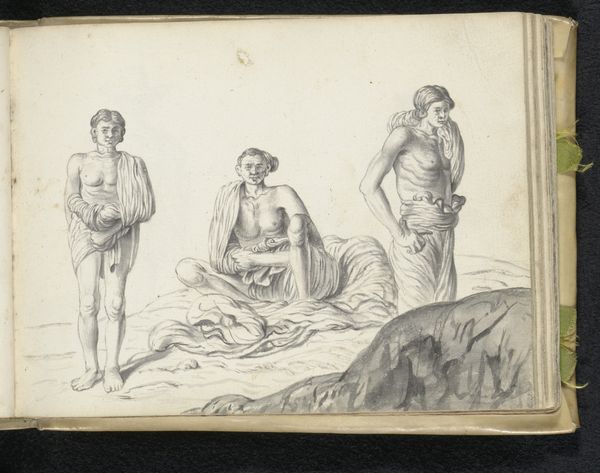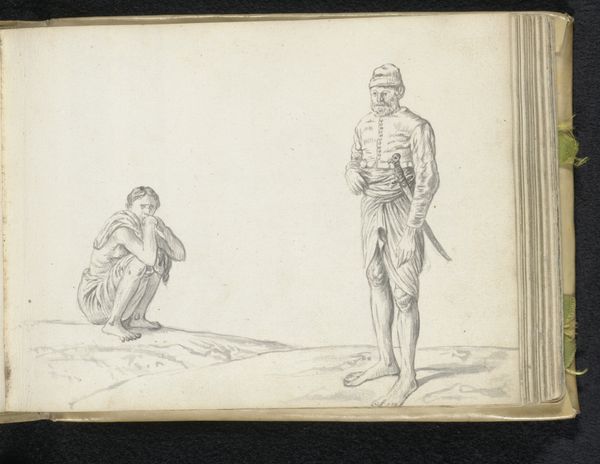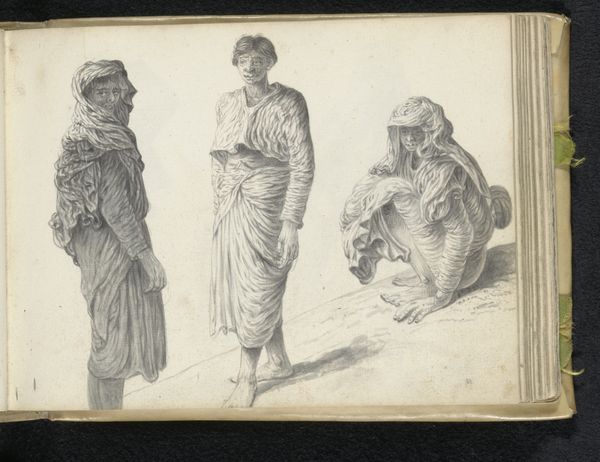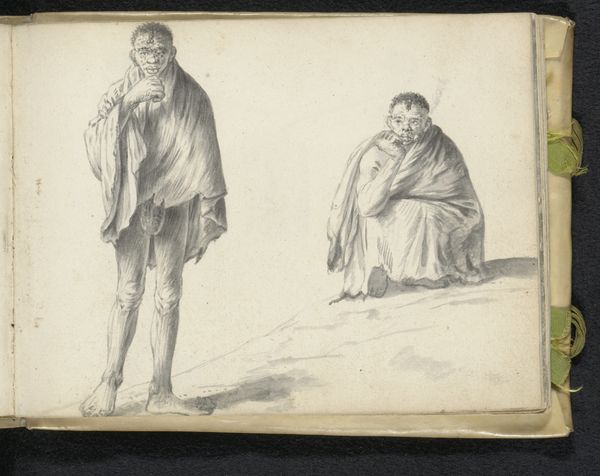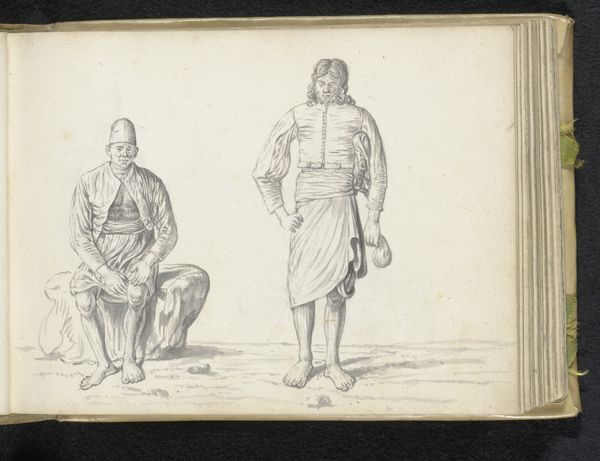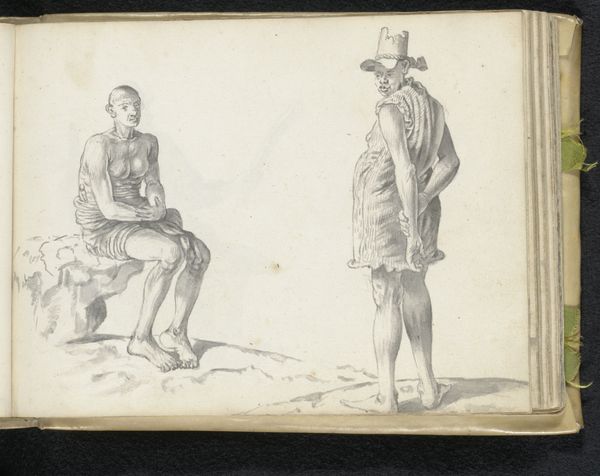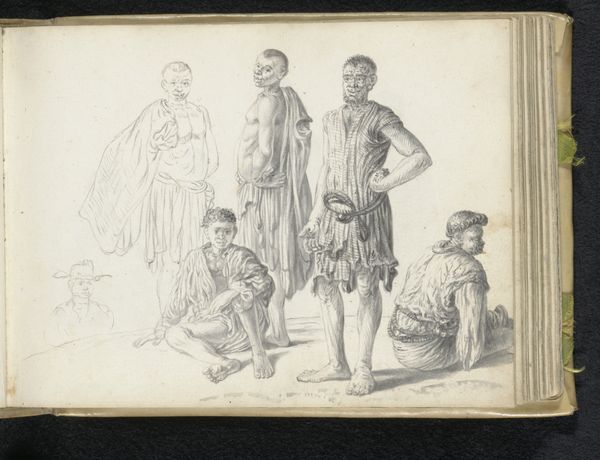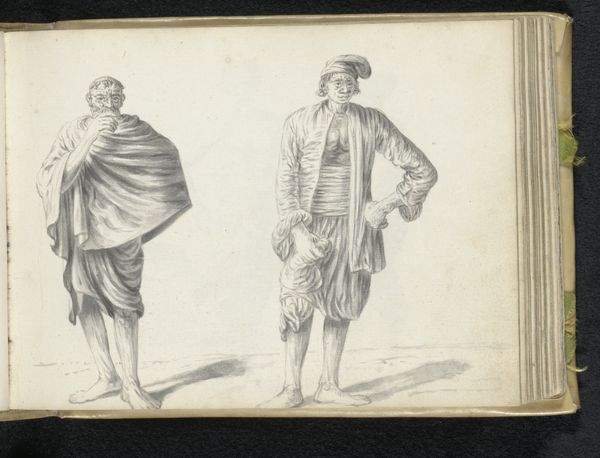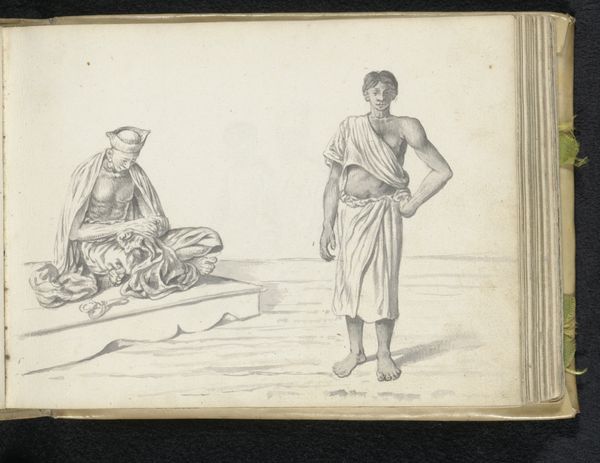
drawing, pencil
#
portrait
#
drawing
#
baroque
#
pencil sketch
#
figuration
#
coloured pencil
#
pencil
#
genre-painting
Dimensions: height 148 mm, width 196 mm
Copyright: Rijks Museum: Open Domain
Curator: Let's turn our attention to this 1662 pencil sketch by Esaias Boursse, titled "Three Labourers." Editor: There's a quietness to this image, isn't there? A sort of melancholy in the grayscale palette. It almost feels classical, in the posing of the figures, yet decidedly human in their weariness. Curator: Precisely. Notice how Boursse uses the varying pressure of the pencil to create depth and shadow, lending volume to their forms and clothing. The lines are confident, economical, capturing the essence of each figure with minimal detail. Semiotically, the clothing, or lack thereof, signifies their social station. Editor: It's interesting that you mention the economy of the piece. I'm drawn to how the quick, almost frantic strokes around the figures' feet suggests a shared earthiness, linking them materially to their labour and surroundings. What kind of labour were they undertaking, I wonder, to appear in this state of partial undress? Curator: Genre painting, of which this is an example, was a Dutch innovation. Boursse likely aimed to present a realistic, unidealized portrayal of the working class. The absence of extraneous detail directs our attention to the interplay of light and shadow. This gives them a sense of gravity, almost a monumental presence despite their humble circumstances. Editor: Right, but beyond pure visual language, this connects us to the actual realities of Dutch society. How they existed within a burgeoning mercantile empire that, in turn, depended upon often unseen and unacknowledged labor. The stark simplicity is more than an aesthetic choice; it feels like a pointed document of class relations and human costs. Curator: An interesting perspective, I concede the simplicity forces us to engage directly with the subjects themselves. A composition rooted in restraint. Editor: Indeed. A reminder that even within these seemingly timeless compositions lie histories of production and unseen effort. Curator: I find I am drawn to reflect again on line quality—how subtle variations speak to volume and light and form… Editor: I walk away considering what material realities gave rise to its existence. Both perspectives add richness.
Comments
No comments
Be the first to comment and join the conversation on the ultimate creative platform.

